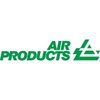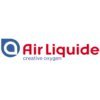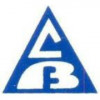Filter interviews by
Linde India Senior Process Engineer Interview Questions and Answers
Linde India Senior Process Engineer Interview Experiences
1 interview found
I applied via Approached by Company and was interviewed in Apr 2023. There were 3 interview rounds.

(1 Question)
- Q1. Regarding operations & maintenance
(1 Question)
- Q1. Strength, weaknesses, about myselfe
Interview Preparation Tips
Top trending discussions






Interview questions from similar companies

Senior Process Engineer Interview Questions & Answers
Ingenero Technologiesposted on 11 Nov 2023
I applied via Referral and was interviewed before Nov 2022. There were 2 interview rounds.

(5 Questions)
- Q1. What is Reactor selectivity?
- Ans.
Reactor selectivity is the ability of a reactor to produce a desired product while minimizing the formation of undesired byproducts.
Reactor selectivity is a key factor in determining the efficiency of a chemical process.
It is influenced by factors such as reaction conditions, catalysts, and reactant concentrations.
For example, in a catalytic hydrogenation reaction, high selectivity would mean that the desired product i
- Q2. How to control selectivity?
- Ans.
Selectivity can be controlled by optimizing reaction conditions, catalyst selection, and process design.
Optimize reaction conditions such as temperature, pressure, and reactant concentrations
Select appropriate catalysts to favor desired reactions over side reactions
Design the process to maximize the desired product yield and minimize byproducts
Use techniques like separation processes to isolate the desired product
- Q3. Difference between selectivity & conversion?
- Ans.
Selectivity is the ratio of desired product to undesired products, while conversion is the percentage of reactant converted to products.
Selectivity measures the efficiency of a reaction in producing the desired product.
Conversion measures the extent to which reactants are converted to products.
High selectivity indicates a high proportion of desired product, while high conversion indicates efficient use of reactants.
For...
- Q4. About your past work experience.
- Q5. Functioning of distillation column
- Ans.
Distillation column separates components of a liquid mixture based on differences in boiling points.
Distillation column uses heat to vaporize liquid mixture
Vapors rise through column and condense at different heights based on boiling points
Separated components are collected at different levels of the column
Bottom of column collects high boiling point components, top collects low boiling point components
Skills evaluated in this interview

Senior Process Engineer Interview Questions & Answers
Triune Energy Servicesposted on 13 Apr 2024
I applied via Naukri.com and was interviewed before Apr 2023. There were 2 interview rounds.
(1 Question)
- Q1. Basically Technical questions is based on previous project
(1 Question)
- Q1. HR asked about salary

(1 Question)
- Q1. Question related to resume

I applied via LinkedIn and was interviewed before Feb 2021. There were 2 interview rounds.

(2 Questions)
- Q1. Basics of heat exchanger design
- Q2. Reading and understanding PID
Interview Preparation Tips

Process Engineer Interview Questions & Answers
Ingenero Technologiesposted on 17 Apr 2024
(2 Questions)
- Q1. Types of relief devices
- Ans.
Relief devices are safety devices used to protect equipment and personnel from overpressure situations.
Types include pressure relief valves, rupture discs, and safety valves
Pressure relief valves are the most common type and operate by opening to release excess pressure
Rupture discs are non-reclosing devices that burst at a predetermined pressure to relieve pressure
Safety valves are similar to pressure relief valves bu...
- Q2. Types of relief devices are Conventional, Balance bellow & Pilot operated.
- Ans.
Relief devices such as Conventional, Balance bellow, and Pilot operated are used in process engineering to protect equipment from overpressure.
Conventional relief devices are simple and rely on a spring-loaded mechanism to relieve pressure.
Balance bellow relief devices use a bellows to balance the pressure on both sides of the valve, allowing for accurate pressure relief.
Pilot operated relief devices use a pilot valve ...

Senior Process Engineer Interview Questions & Answers
Triune Energy Servicesposted on 13 Apr 2024
I applied via Naukri.com and was interviewed before Apr 2023. There were 2 interview rounds.
(1 Question)
- Q1. Basically Technical questions is based on previous project
(1 Question)
- Q1. HR asked about salary

(2 Questions)
- Q1. How is flow affected with change in velocity in a venturimeter.
- Ans.
Velocity change affects flow in a venturimeter.
As velocity increases, pressure decreases and vice versa.
Flow rate is directly proportional to the square root of pressure difference.
Venturimeter is used to measure flow rate in pipes.
Flow rate can be calculated using Bernoulli's equation.
- Q2. Which is better cstr/pfr for zero order reaction.
- Ans.
PFR is better for zero order reaction as it maintains constant concentration throughout the reactor.
PFR maintains constant concentration throughout the reactor
CSTR may result in concentration gradients
PFR is more efficient for zero order reactions
CSTR may be more suitable for reactions with changing rate constants
Interview Preparation Tips

Process Engineer Interview Questions & Answers
Ingenero Technologiesposted on 23 Nov 2023
I applied via Walk-in and was interviewed in May 2023. There were 4 interview rounds.

(1 Question)
- Q1. On the basis of your resume
(1 Question)
- Q1. Designing knowledge
(1 Question)
- Q1. General interaction
Interview Preparation Tips

Senior Process Engineer Interview Questions & Answers
Ingenero Technologiesposted on 11 Nov 2023
I applied via Referral and was interviewed before Nov 2022. There were 2 interview rounds.

(5 Questions)
- Q1. What is Reactor selectivity?
- Ans.
Reactor selectivity is the ability of a reactor to produce a desired product while minimizing the formation of undesired byproducts.
Reactor selectivity is a key factor in determining the efficiency of a chemical process.
It is influenced by factors such as reaction conditions, catalysts, and reactant concentrations.
For example, in a catalytic hydrogenation reaction, high selectivity would mean that the desired product i
- Q2. How to control selectivity?
- Ans.
Selectivity can be controlled by optimizing reaction conditions, catalyst selection, and process design.
Optimize reaction conditions such as temperature, pressure, and reactant concentrations
Select appropriate catalysts to favor desired reactions over side reactions
Design the process to maximize the desired product yield and minimize byproducts
Use techniques like separation processes to isolate the desired product
- Q3. Difference between selectivity & conversion?
- Ans.
Selectivity is the ratio of desired product to undesired products, while conversion is the percentage of reactant converted to products.
Selectivity measures the efficiency of a reaction in producing the desired product.
Conversion measures the extent to which reactants are converted to products.
High selectivity indicates a high proportion of desired product, while high conversion indicates efficient use of reactants.
For...
- Q4. About your past work experience.
- Q5. Functioning of distillation column
- Ans.
Distillation column separates components of a liquid mixture based on differences in boiling points.
Distillation column uses heat to vaporize liquid mixture
Vapors rise through column and condense at different heights based on boiling points
Separated components are collected at different levels of the column
Bottom of column collects high boiling point components, top collects low boiling point components
Skills evaluated in this interview
Linde India Interview FAQs
Tell us how to improve this page.
Linde India Interviews By Designations
- Linde India Graduate Engineer Trainee (Get) Interview Questions
- Linde India Graduate Trainee Interview Questions
- Linde India Engineer Trainee Interview Questions
- Linde India Finance Executive Interview Questions
- Linde India Operations Engineer Interview Questions
- Linde India Senior Engineer Interview Questions
- Linde India Associate Engineer Interview Questions
- Linde India Associate General Manager Interview Questions
- Show more
Interview Questions for Popular Designations
- Process Associate Interview Questions
- Processing Executive Interview Questions
- Process Engineer Interview Questions
- Process Developer Interview Questions
- Senior Process Associate Interview Questions
- Senior Processing Executive Interview Questions
- Voice Process Executive Interview Questions
- Process Analyst Interview Questions
- Show more
Linde India Senior Process Engineer Interview Process
based on 1 interview
Interview experience
Interview Questions from Similar Companies
Fast track your campus placements
Linde India Senior Process Engineer Reviews and Ratings
based on 1 review
Rating in categories
|
Principal Engineer
112
salaries
| ₹10 L/yr - ₹21.5 L/yr |
|
Senior Executive Engineer
95
salaries
| ₹6 L/yr - ₹16 L/yr |
|
Associate Manager
91
salaries
| ₹5.9 L/yr - ₹18 L/yr |
|
Senior Principal Engineer
88
salaries
| ₹12.5 L/yr - ₹28 L/yr |
|
Senior Engineer
80
salaries
| ₹5.2 L/yr - ₹13 L/yr |

Airproducts

Praxair

Air Liquide
Taiyo Nippon Sanso Corporation
- Home >
- Interviews >
- Linde India Interview Questions >
- Linde India Senior Process Engineer Interview Questions


















